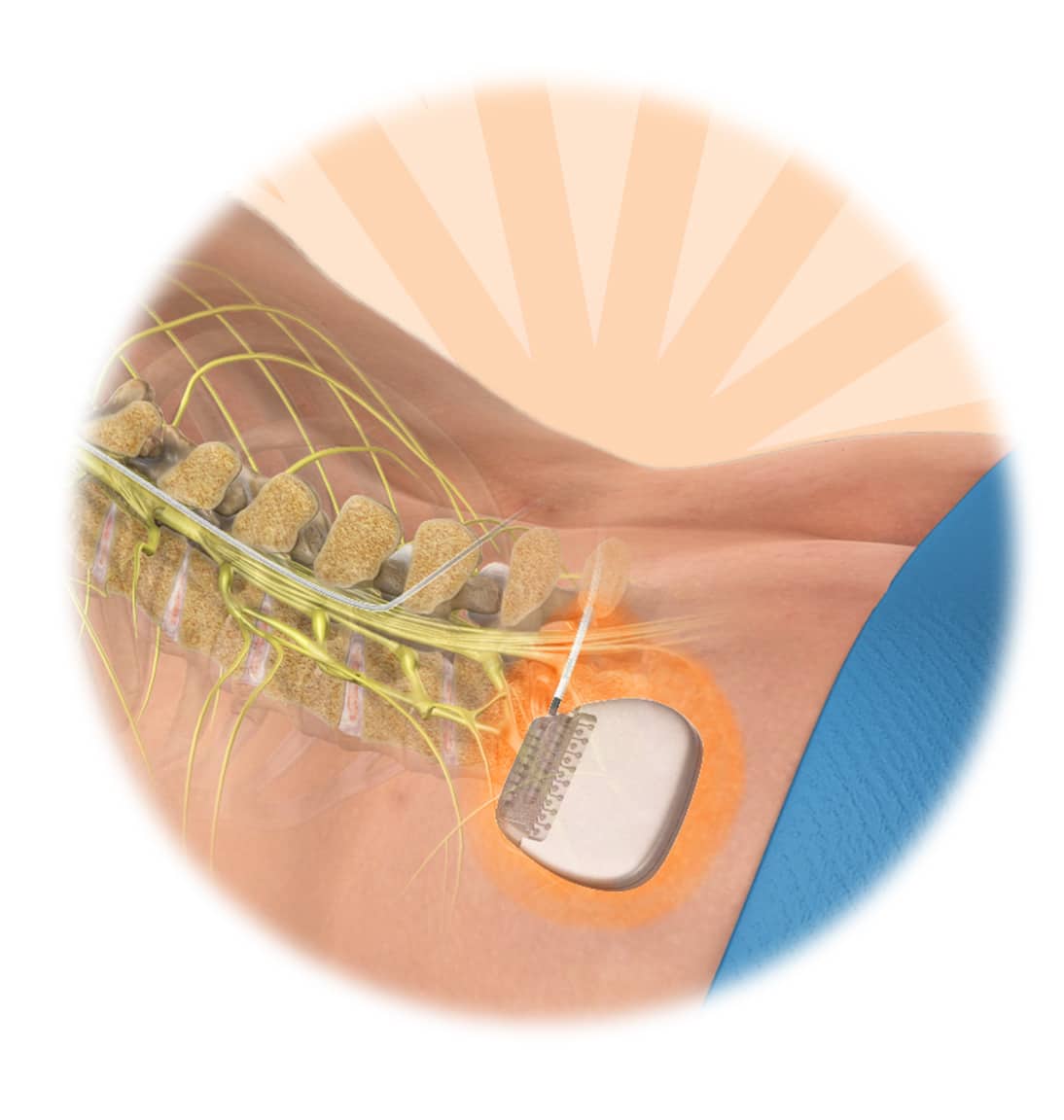Spinal Cord Stimulation: Breakthrough Relief for Chronic Pain
Understanding Spinal Cord Stimulation

Living with chronic pain can feel like a daily battle — one that often affects every part of life, from sleep and mobility to mood and mental health. When conservative treatments such as medications, physical therapy, or injections fail to provide relief from chronic pain, spinal cord stimulation (SCS) may offer a new path forward.
What is Spinal Cord Stimulation?
Spinal Cord Stimulation (SCS) is a minimally invasive procedure that uses an implanted device to deliver mild electrical impulses to the spinal cord. These impulses interrupt pain signals before they reach the brain, helping to reduce the sensation of pain without the need for high-dose medications.
Spinal cord stimulation offers a range of benefits for people living with chronic pain. Many people experience a significant reduction in pain, which can lead to less reliance on opioid medications. As pain levels improve, so does mobility and day-to-day function — making it easier to stay active and engaged. Better pain control can also support more restful sleep and an overall improvement in quality of life. Because the therapy is customizable and adjustable, it can be tailored to meet each individual’s unique needs over time.
SCS has been FDA-approved for decades and continues to evolve with more advanced, targeted technologies that improve comfort and outcomes.

How Does a Spinal Cord Stimulator Work?
The SCS system typically includes:
- A pulse generator (like a pacemaker) implanted under the skin, usually in the lower back or upper abdomen.
- Leads or electrodes that deliver electrical pulses to specific areas of the spinal cord.
- A handheld remote control that lets you adjust the stimulation level as needed.
When the device is turned on, it sends low-level electrical signals through the leads to the spinal cord. These signals block or change how pain signals are perceived by the brain—often replacing pain with a tingling sensation or eliminating it entirely.
Who is a Good Candidate for a Spinal Cord Stimulator?
Spinal cord stimulation is often considered for people living with chronic pain who haven’t experienced meaningful relief from other treatments. It’s typically considered when more conservative therapies — things like physical therapy, medication and injections — have been tried without success.
It is commonly used to treat:
- Back pain
- Neck pain
- Leg pain
- Arm pain
- Failed back surgery syndrome (FBSS)
- Complex regional pain syndrome (CRPS)
- Cancer pain
- Diabetic peripheral neuropathy

Who is Not a Good Candidate for a Spinal Cord Stimulator?
Spinal cord stimulation isn’t right for everyone. People who are not good candidates typically have pain that isn’t related to nerve function or haven’t yet tried other treatment options. It may also not be appropriate for individuals with untreated mental health concerns or an inability to undergo the trial phase. A thorough evaluation by a specialist is needed to determine whether spinal cord stimulation is a safe and effective procedure for treating your chronic pain.
The SCS Trial: Try Before You Commit
One of the most important benefits of spinal cord stimulation is the ability to test it before making a long-term decision. During the trial phase, temporary leads are placed near the spinal cord and connected to an external stimulator worn outside the body. The trial typically lasts about a week and gives individuals a chance to see how well spinal cord stimulation helps with their chronic pain in real-world conditions.
Throughout the trial, stay active, monitor changes in pain levels and note any improvements in movement or comfort. If the trial results in significant pain relief — often defined as at least a 50% reduction in pain — you and your provider may decide to move forward with a permanent implant. If it’s not effective, the leads are simply removed with no lasting changes.
What are the Risks of Spinal Cord Stimulation?
As with any medical procedure, there are potential risks to consider. That includes infection, lead movement and device malfunction. Serious complications are rare, however, and advancements in SCS technology have greatly improved safety and comfort.
It’s also important to work with a specialist to determine whether you’re a good candidate. Ideal candidates typically have chronic pain that hasn’t responded to other treatments and are medically fit for a minor surgical procedure.
What if My Pain Changes?
Pain isn’t always static — and spinal cord stimulation is designed with that in mind. If your pain changes over time, the settings on your device can often be adjusted to better target the areas that are bothering you. You’ll work closely with your care team to fine-tune the stimulation for the best possible relief.
If spinal cord stimulation no longer provides meaningful improvement, the system can be turned off or even removed entirely. Having that flexibility means you’re never locked into a treatment that no longer fits your needs.
Take Control of Your Pain
Spinal cord stimulation isn’t right for everyone, but for many, it’s a life-changing option that brings lasting relief after years of struggling. If you or a loved one is living with chronic pain that hasn’t improved with conservative therapies, reach out to our team of pain specialists to learn more about whether SCS may be a good fit and the steps to take. Call us today 763-537-6000!
